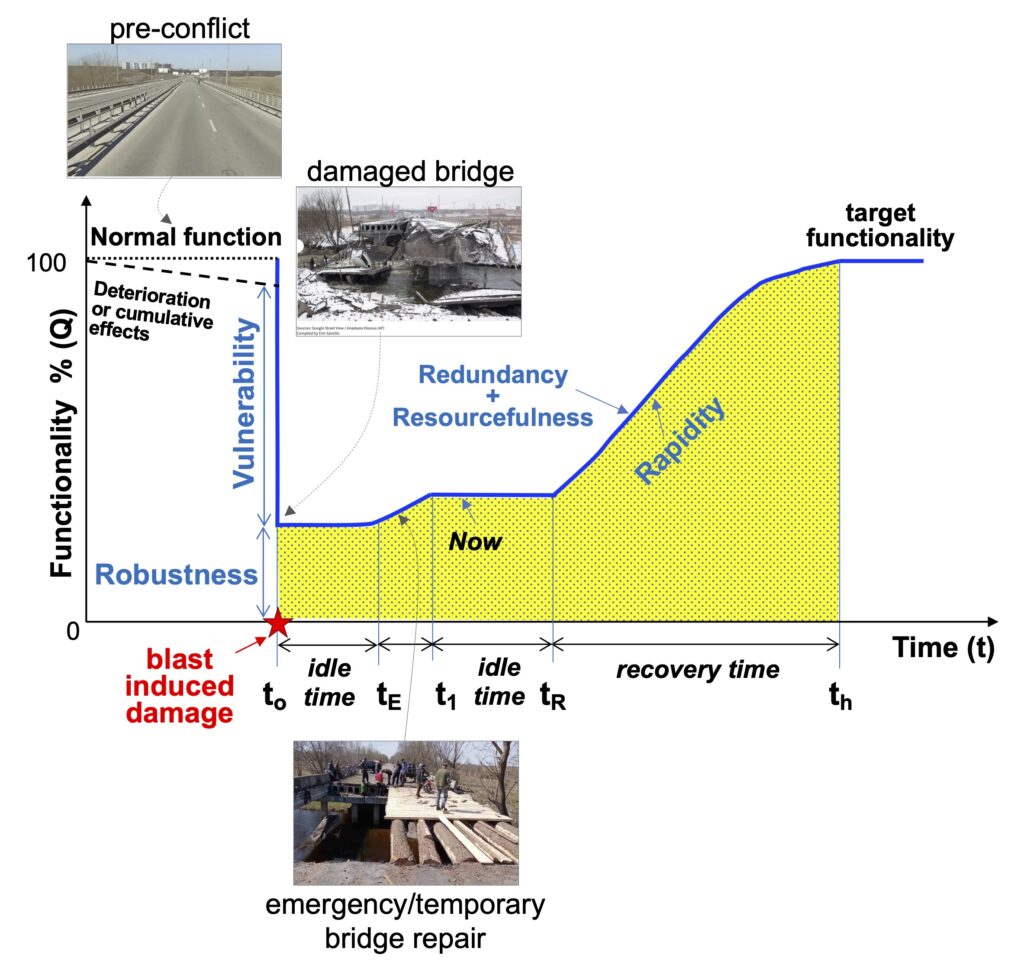Todate a total of approximately 500 bridges have been damaged, which is an average of 2 bridges per day.
We are currently creating an inventory of damaged bridges, and other critical infrastructure assets, to quantify the upfront direct (structural) and indirect (traffic, functionality, services, environmental) losses and to inform the resilience models.
We collect data and forensic evidence by people on the ground to inform resilience models. A resilience model for a critical asset, i.e. a bridge, is shown below:

Terminology:
vulnerability & robustness: depend on the bridge type, e.g. continuous or simply-supported deck, material, component(s) affected by the blast
redundancy: for the bridge, depends on the alternative paths to transfer loads to the ground (aka statically indeterminate structure); for the network depends on the alternative routes
resourcefulness: depends on the capacity to mobilise needed resources and services post-disaster
idle time: depends on duration of conflict, accessibility, responsiveness and prioritisation
rapidity & recovery time: depend on owner’s policy, prioritization due to bridge importance, available resources, extent of damage, restoration tasks
Resilience framework:
- A novel resilience framework is introduced to support infrastructure recovery prioritisation in Ukraine
- Resilience by assessment based on standoff observations from disparate data sources (satellite imagery, social media, OpenstreetMap)
- Reconstruction prioritisation using cost-based resilience for the benefit of the society
See also:
Mitoulis, S.A., Argyroudis, S., Panteli, M., Fuggini, C., Valkaniotis, S., Hynes, W., Linkov, I. (2023) Conflict Resilience Framework for Critical Infrastructure Peacebuilding. Sustainable Cities and Society, 91(104405) https://doi.org/10.1016/j.scs.2023.104405